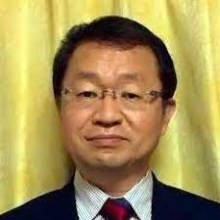MAE Seminar: Blue Flame Combustion with Diesel Injection System - Modulating Spray Liquid Length and Flame Lift Off

Professor
University of Hiroshima
Abstract: The latest designs of diesel engine combustion systems employ exhaust gas recirculation (EGR) to help decrease NOx but can also contribute to the soot formation process. Such systems also adopt very high injection pressure (200MPa or higher) and very small nozzle hole diameter (0.1mm or smaller) to help reduce soot emissions. To clarify the reason why such an injection condition reduces the soot formation in the spray flame, the spray and flame experiments were conducted using the constant volume chamber with optical access, the high-speed video camera and the spray/combustion diagnostics. Measurement was made of Liquid Length (LL), the length of the liquid phase from the nozzle hole exit, of the evaporating spray and Lift-Off-Length (LOL), the length from the nozzle hole exit to the ignition location of the spray flame. Increasing the injection pressure and decreasing the nozzle hole diameter helps avoid the interference between LL and LOL, inhibit the soot formation and create the blue flame.
Bio: Keiya Nishida is a professor at Hiroshima University where he has been conducting research on engine in-cylinder flow phenomena including 1) liquid fuel atomization, spray evaporation and mixture formation mechanisms, 2) fuel injection technology for combustion and emission control, 3) the elucidation of the flow mechanism in engineering applications and, 4) measurement and numerical study of two-phase flows.
Share
Upcoming Events
-
MSE 298 Seminar: Mechano-Electrochemical Phenomena at Ceramic Electrolyte Interfaces
-
CBE 298 Seminar: Beyond the Tailpipe - From the Science of Soot Formation to the Engineering of Carbon Nanomaterials
-
CEE Seminar: Pricing and Control in Emerging Mobility Systems
-
MSE 298 Seminar: Innovation In Materials Science - An Industrial R&D Perspective
-
CBE 298 Seminar: Multiscale Modeling of Double Layer Effects in Electrocatalysis
